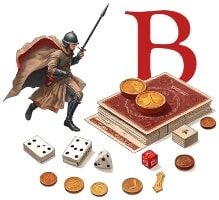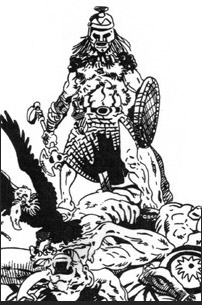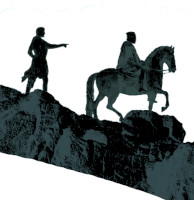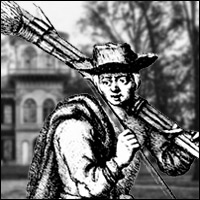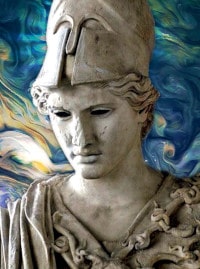Chariot & Oar
The chariot was used in the Bronze Age by the elite as:
-A battle taxi to get foot soldiers to the fight in heavier armor without fatigue
-A firing platform for using composite bows, a very powerful bow
-An an ambulance
-A command car
-A racing cart
-A ceremonial cart
-A shock weapon with scythes on the hubs, seems to have been a later iron age novelty that did not work at all.
My work on this is in All-Power-Fighting.
Many type were light enough to be transported in disassembled kits like a little willy jeep of WWII.
The Hittites used chariots to transport spear men and the Egyptians as archery platforms. When they met in battle at Kadesh they fought to a draw.
Both types of chariot forces operated from a base of spear men where they could rally. These armies also employed light infantry sword and ax men using shields who seem to have arrived in open ships, the later called the pentaconter, the ship of Jason and Odysseus, and who also employed slings and other light missile weapons as skirmishers.
During the Bronze Age Collapse, which was only military in a secondary sense the more missile oriented Egyptian defenders fought against an amphibious invasion [which is the hardest attack to pull off and is no longer used by the U.S. Marines] of these closer fighting Sea Peoples [who they also used as mercenaries] and held them to a draw. The rest of the 7 chariot empires fell to these swordsmen, who seem to have ran up onto the chariot platform and killed the driver and archer or spear man with a blade.
Throughout the age of muscle powered warfare, the oarsman, a very strong and enduring fellow, was a feared combatant, down from the Bronze Age to the Viking Age.
…
Spear & Javelin
The thrust spear is more deadly than the thrown spear or javelin because it does more damage, by a factor of 3 to 4.
Both may be used overhanded and underhanded, surprisingly, as illustrated in All-Power-Fighting.
Throughout the Greco-Persian Wars it was a fact that spear armed hoplites defeated javelin throwing and arrow loosing Persian horsemen and footman with regularity and often ease. The fighter seeking to come to close grips took the day.
Also note that the best javelin men fought at close range. Men who throw well tend to be good swordsmen and light infantry and were armed with larger swords than the spear men. The first contest at Olympia was said to be between a peltast and an archer. Like Odysseus, these men would be powerful, the pitchers and quarterbacks of their day.
Alexander the Great’s Agriannian javelin men were deployed in the front line and went after the enemy horsemen and were used to breach fortified positions. Even men whose main weapon was a sheaf of darts sought close range to deploy them and then often went in with the sword and were greatly feared—the best of darters sought to close.
Alexander’s pike men had longer pikes. These were the “rollers” [phallanx] the holding and pressure arm of the formation, while the strikers were the Agrianians, the foot companions who had shorter spears, and the horse companions who got right on top of the enemy with down thrust lance and sword.
The greatest conqueror in human history always sought to get close, to go for the throat, while his foes usually tried to maintain a distance battle, and he never lost.
The Spartan boast at Thermopyle, after the Persian ambassador declared that their arrows darkened the sky, was to joke that they would fight in the shade, and it was true.
…
Sword & Spear
The Hoplite had as his primary weapon, the Aspis, the shield, and it was the closest range weapon. Indeed, he was named Shieldman after the earlier and obsolete shield known as a hoplong. His secondary weapon was the spear, his backup weapon the sword
The Macedonian phalangite had as primary had his primary weapon as the sarrissa, a double length spear, had a small slung shield and a small sword. This became the most important aspect of the Phallanx army that ruled antiquity from 350 to 170, roughly. It was heavily dependent on three other types of operators and was designed to be handled by a military genius who was also a hero king.
For a Republic, like Rome, something simpler to command and more uniform in nature was desired, something that complimented the lack of imagination and extreme ruthlessness of their culture. The answer was making the sword the primary weapon, something the Romans learned from the Celts and Iberians, the latter whose sword design they borrowed.
The legionaire was a compromise hoplite [with the scutum a variation of the hoplong], and javelin man. His pilum javelin could be used to ward off horse men as a spear, but was mostly designed to bend when hitting a shield and thus disarm the shield man of his primary weapon.
The ruthless swordsman, trained by slave gladiators, would rule antiquity for to ages, the Republican period until B.C. 31 and the Imperial period, down to A.D. 260 or so.
Nothing makes a better study of the value of proximate aggression than these two army types. No human culture has been more consistently ruthless then Rome, committing more genocides than any nation of antiquity. Rome is a study in the kind of aggression that tribes used against each other when driven by circumstance to compete for the same land. [1]
The following is only a proximity review, not a study of the operational structure of these armies.
…
Republican Legion
The first facet of attack was the velites, youths with throwing darts that could not and would not stand against a close foe and would retreat through the heavier ranks and take up a secondary roll. This was a screen, not even regarded as one of the lines of attack.
The first line were the swordsmen in their younger majority.
The second line was the swordsmen in their prime. These are the men that should win a battle.
The third line was old veterans with spears, the guys that went in for the final kill against an evenly matched foe or where a beaten legion rallied when shit went sideways.
Rich men fought as horsemen and were not of much account.
The Republican legion prioritized proximity, of getting in close, over ranged weapons at a 5 to 1 rate. Do note, however, that the Romans kept alive the ancient idea of hunting a foe like an animal: the velites dressed sometimes in wolf hides, just as Thracians did in fox caps. Additionally, war dogs were used in war.
…
The Imperial Legion
This formation goes entirely to swordsmen, who doubled as combat engineers and civil engineers. Specialized roles that were formerly taken up by the youths, old men and rich men, were now handled by allied forces.
Missile weapons became more, not less important in this period, with siege engines used even on the field and highly effective missile troops from allied or client nations filling better the roll that teenagers once filled.
The Imperial legion was an extreme close combat formation that specialized in taking fortified positions against barbarian and civilized foes and of manning field-built strong points against barbarians. The distinctive lorica armor and the neck guard helmet were designed to deflect downward plunging rocks.
By Trajan’s time the standard bearer in lion skins and the centurian with a sword and rod were routinely committed to close combat. Allied troops of lighter type, began in the siege of Jerusalem in 71-72 and continued into the Dacian wars circa 114, as close fighters, in the role of Alexander’s Agrianians, at the tip of the spear.
Nothing echoes the Cromagnon extermination of the Neanderthal, whose final members must have been killed in their caves, then the hundreds of years of siege warfare of Celtic hill forts and walled cities, committed by the Romans.
But, like the Cromagnon once came from the hinterlands with dogs, and the Arуans on horses to conquer Europe during cooling conditions and natural upheavals that made open lands less hospitable, the Huns and the Sarmatians and Germans driven before them, would use the stirrup [first found in the 200s in Britain, possibly used by Sarmatian allies] as a means to make the horseman pimarily a close combat fighter rather than as a dart thrower or horse archer.
…
-1. Keely, in War before Civilization, demonstrates that genocide was the preferred stone age and iron age, pre-civilized method for dealing with resource scarcity.


